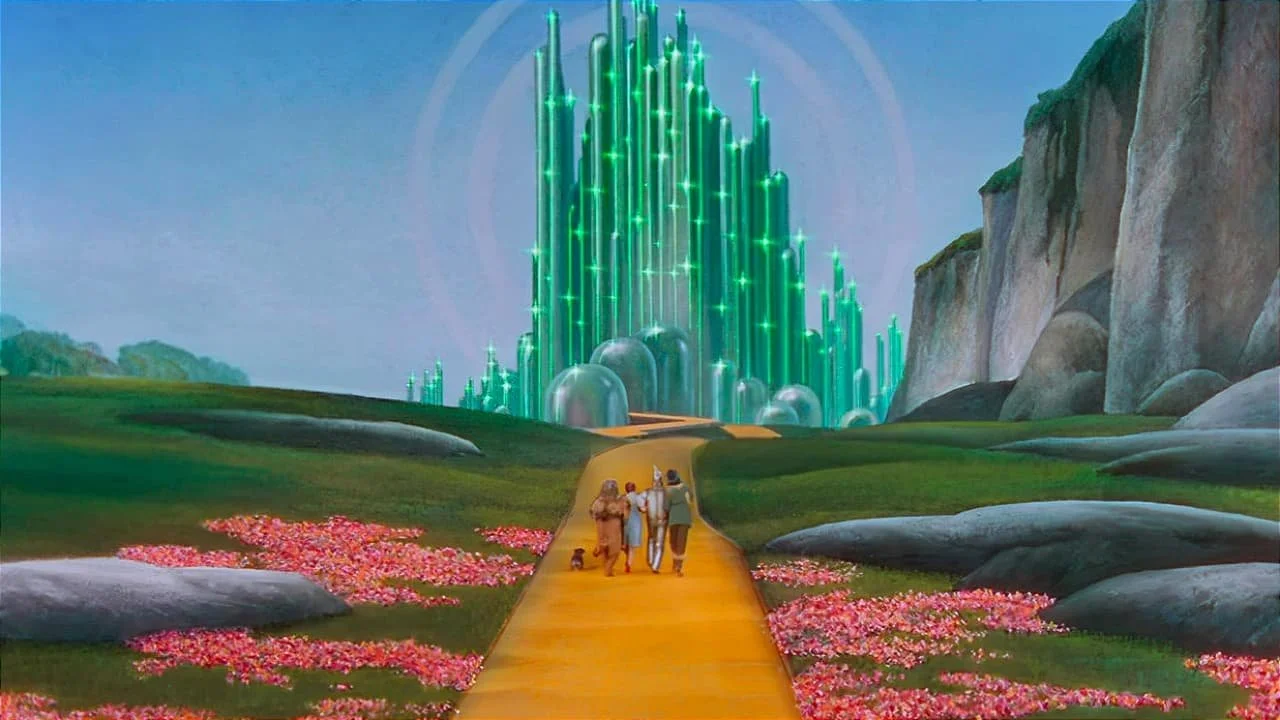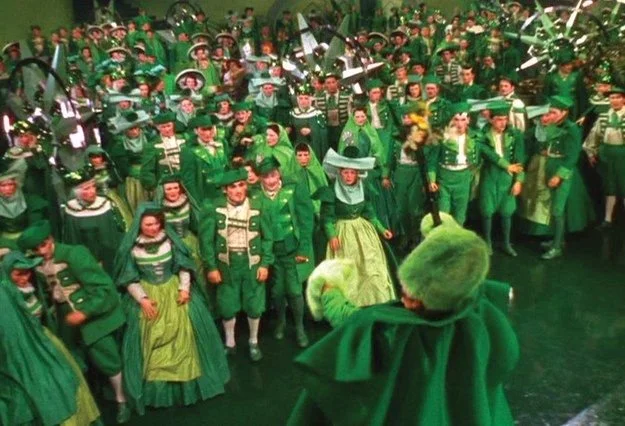To everything, there is a season: Turn, Turn, Turn
Emerald City By Emma Woolley
Wonder series 2024
20” x 16” - Oil on heavyweight paper
A reflection on the final painting of the Wonder Series
Emerald City was painted on a grey September Saturday. The kind where summer hasn’t quite let go, but you can feel the shift. The trees outside our window along Haunch Brook were just beginning to turn. That slow, golden creep of change. I’d had a long week in the design studio, and for once, I felt like I had the headspace to sit and paint without pressure. And for the first time, I took everything outside.
It wasn’t a grand setup. Just the garden table, a desktop easel, and a primed piece of Fabriano Tela. I wasn’t planning on painting green. That wasn’t the point. But something about the light, the season, the stillness of the afternoon — Qui sitting beside me, our neighbour nearby with her newborn — it opened something up. And as I began to paint the face, sap green and viridian began to pour in. First in the shadows. Then the neck. Then the background. Then the hair. Everything turning green.
It didn’t click until the very end what I’d made. This painting had become Emerald City. As in that Emerald City. The Wizard of Oz, 1939, Judy Garland. The technicolour turning point. It wasn’t something I’d planned. But it hit hard. I grew up with that film. Saturday afternoons round my nan’s house in Acocks Green, VHS tape humming in the background, cousins piled on the carpet. My mum, my grandad Ron, my nan Edna. And me and my brother Ben, watching Dorothy knock on the green gates.
"The Wizard of Oz" 1939. Starring Judy Garland. Directed by Victor Fleming
That memory sat in the paint, quietly.
So did another. My dad’s funeral in 2011. The song that played as we walked out: Turn! Turn! Turn! by The Byrds.
“To everything there is a season, and a time to every purpose…”
I hadn’t thought about it in years. But it came flooding back as I finished the painting. And suddenly the green wasn’t just about nature, or film, or pigment. It was about regeneration. A closing of a cycle. The letting go. The turning.
Because Emerald City was the final painting in the Wonder Series. I didn’t know it at the time, but it was. I didn’t paint anything in October. Or November. Or December. I never paint in winter, actually. Maybe now I understand why. This was the final chapter. The joy after grief. The laugh after the cry.
And there’s joy all over this painting. In the brushwork, in the playful background, in the warm pinks in the nose. There’s a full palette of greens — sap, viridian, phthalo, bottle — woven through like thread. At one point, I dragged tones from the hair back into the face, just to lock it all together. I do that a lot. It’s a painter’s thing, maybe, but it’s also emotional. It’s how I make everything feel like it belongs.
"The Wizard of Oz" 1939. Starring Judy Garland. Directed by Victor Fleming
If I hadn’t painted again, I would have never known this feeling. I would have never known how much I needed it. Because painting is not just a thing I do.
It’s how I balance. It’s how I live. I’m a Libra, after all.
Looking back at the Wonder Series now, it’s wild to see how much was unspoken while I was painting it. That body of work helped me come through bereavement. Helped me survive the loss of my mum. And I didn’t even realise it at the time.
From Boy in the Red Glasses to Parma Violet to Emerald City, every one of those portraits carried me forward. Until I could step through the gates again.
"The Wizard of Oz" 1939. Starring Judy Garland. Directed by Victor Fleming
If Emerald City had a voice, it would be singing my dad’s favourite song.
If it had a message, it would be this: You will get through this. There is light at the end of the tunnel. It might even be emerald green.
Things turn, turn, turn, don’t they?




